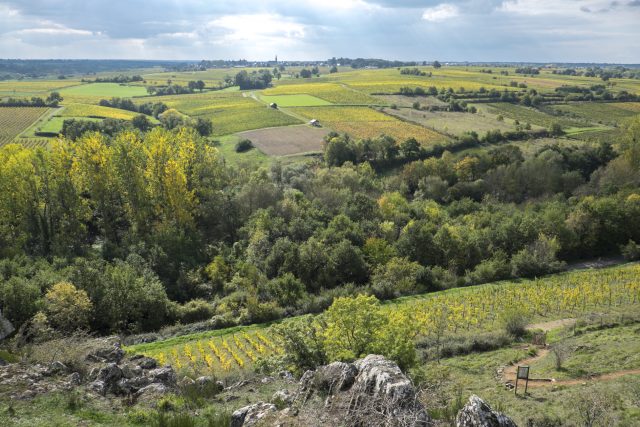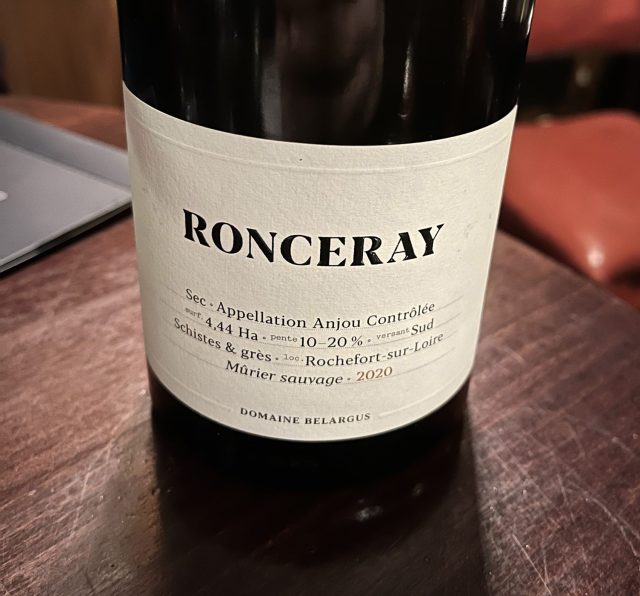This website uses cookies so that we can provide you with the best user experience possible. Cookie information is stored in your browser and performs functions such as recognising you when you return to our website and helping our team to understand which sections of the website you find most interesting and useful.
‘The Loire is the next Burgundy’
Domaine Belargus founder Ivan Massonnat spoke with db about tapping into the Loire Valley’s potential, the distinct terroir of Anjou, and the solution to fighting spring frosts.

Massonnat’s journey into wine was not a direct route. Growing up in the Alps, his grandfather’s vineyard was not enough to propel him into oenology at a young age: “I never drank wine as a teenager.”
At 25, his indifference towards wine became a growing obsession. “The minute I set my sight on it, the fascination began,” he explained.
It was Burgundy in particular that would draw, and continues to draw, his attention: “It has a cooler climate, there’s an emphasis on single varieties and expressions of place.”
A career in finance provided Massonnat with the monetary means necessary to buy a country house in the Loire in 2006. He took a budding interest in the valley because of the possibility of doing things a little bit differently: “This is one the most attractive regions in France, unlike the big regions where everything has been done.”
He did acknowledge that the Loire’s reputation for fine wine has not always been strong, remarking that in the latter half of the 20th century, the region veered increasingly towards “glou glou wines”. This was something he sought to change.
In 2018, he then took over Jo Pithon’s estate and established Domaine Belargus, the name a reference to a blue butterfly, an allusion to how he aims to “resonate with nature”, adhering to biodynamic principles.
However, nature is not always on the side of viticulturists. With images of a dried up Loire River from last summer in mind, db asked whether drought was the major climatic hazard, but Massonnat said that frost was the “biggest challenge”, due to Chenin Blanc being an early-budding variety.
Spring cold snaps, such as those which have caused so much damage in Northern French wine regions in recent years, “used to be very rare,” Massonnat explained. Pithon, his predecessor, only endured one notable spring frost episode, in the 1990s. In five years, Massonnat has already experience two – the one in April 2021 cost him 70% of his crop over night.
Though Domaine Belargus is trialling electric heating wires that use less energy (he dubbed the traditional anti-frost solution of candles as “expensive, dirty, and awful for the environment”), Massonnat insisted that “there is no silver bullet to fight frost”.
While focused on dealing with frosts, Massonnat is also well aware that the recent hot summers which have greatly benefitted the ripening of grapes will become a problem for Loire producers: “The next generation will have to deal with what the southern regions are facing.”
Rather than resting on their vine leaves, the 15-strong team at Domaine Belargus are currently trialling a number of options to ensure that the vines and fruit remain healthy in the heat, including new root systems and different pruning styles.
For all the problems the environment can pose, Massonnat believes that Anjou Noir, so named after its dark schist soils, is where the “hierarchy of terroirs” is most evident in the Loire.

“I don’t sell Chenin, I sell Anjou wines,” suggested Massonnat, pointing to the front label of his 2020 Ronceray that is adorned with all manner of technical information about the plot, but not the grape variety used.
Indeed, Massonnat has striven to put Anjou on the map, quite literally: “In Anjou, there was no map, and I thought ‘how can I sell 15 different wines from an area with no map?’ So, I created one.”
From plot to plot, the wines created from Anjou Noir fruit can range from light, austere and acidic, to rich and opulent.
The wine Massonnat exhibited at the meeting leans towards opulence and is named after Ronceray, rather than Quarts-de-Chaume Grand Cru (the Loire’s only Grand Cru), as the latter can only be used on sweet wine labels. Dry Chenin Blanc created on former sweet wine plots is very much Massonnat’s signature, labelling difficulties aside.
“Why was there already a vineyard here [at Quarts-de-Chaume Grand Cru] 1,000 years ago? Because it’s obvious. Terroir is about the obviousness of the place, not all places are equal – flat land is good for carrots and salad, less so for wine. That very notion is the foundation of the French wine vision.”
Suggested pairings for the Ronceray include risotto, buttery chicken and aged comté. “If you exclude red meat,” Massonnat suggested, “white wine pairings are infinite.”
“People can’t always afford Burgundy, but cooler climate wines are really ideal for gastronomy, because of their acidity and lower alcohol. Burgundy has made a fortune from cultivating that section of the market.”
While he aims to create wines that can age for decades, Massonnat concluded: “I’m not worried about the end result, but I would like it to be faster than 100 years!”
Related news
A 'challenging yet surprising' vintage for Centre-Loire in 2024
Freixenet engages travellers at Barcelona Airport
Bourgogne wine see global growth despite difficult market conditions

